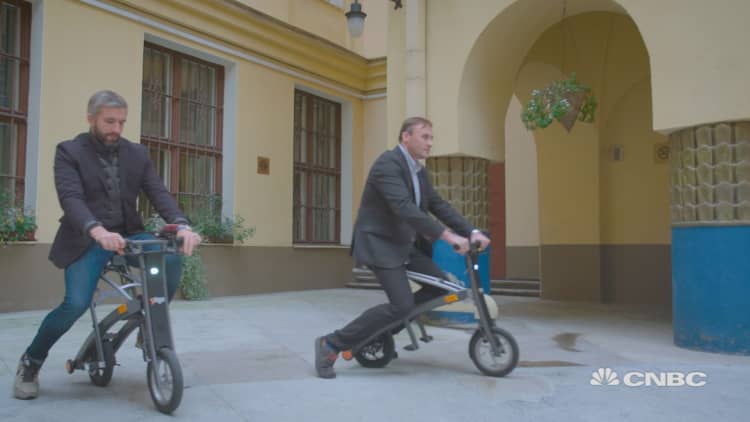
In cities around the world, the sight of people using electric scooters is becoming increasingly common.
Firms such as Bird and Lime, which offer users a platform that allow them to locate and hire electric scooters using their smartphone, are changing the way we think about urban transport.
In Estonia, one business has developed an electric scooter that it says can fold up in two seconds flat.
Able to reach speeds of up to 16 miles per hour, the Stigo can travel a potential 25 miles on a single charge. The idea is that, by using a zero-emission scooter to travel short distances instead of other transport, users can save time and help the environment.
"Usually you need to have … a one ton or two ton vehicle to take a 70 kilogram person for maybe … a three kilometer distance," Stigo's CEO, Ardo Reinsau, told CNBC's "Sustainable Energy."
"But now we are able to take a 13 kilogram Stigo, for example, and take the same 70 kilogram person from point A to point B," he added.
Whether electric scooters take off and become a popular mode of transport for urban commuters remains to be seen. Regulatory hurdles pose a significant challenge to their mass adoption.
In the U.K., for example, powered mini scooters are not allowed to be used on pavements.
If their owners want to use them on the roads, scooters would need to be registered with the Driver and Vehicle Licensing Agency and then licensed and insured. Users would also have to obtain a driving license and wear a helmet.
What cannot be denied is that transport is changing. Hydrogen buses and trains, electric cars and ride-sharing services are just some of the new services now being offered. The bicycle is another mode of transport becoming popular.
"With respect to bikes, I think there's a few things," Boyd Cohen, from the EADA Business School in Barcelona, told CNBC's "Sustainable Energy."
"We're seeing an explosion in new forms of two wheeled vehicles that are accessible to people — their own bikes, bike sharing, electric scooter sharing, and electric bike sharing," he added. "All these will become more and more ubiquitous."




